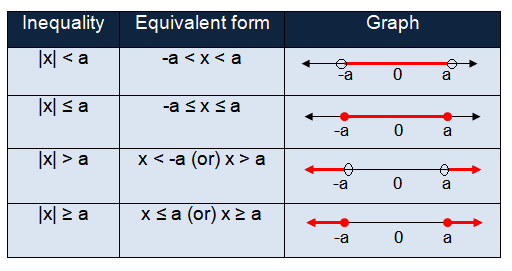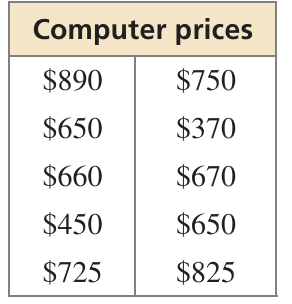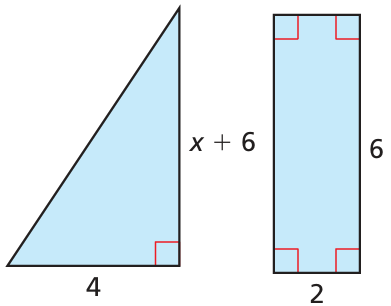SOLVING ABSOLUTE VALUE INEQUALITIES
Subscribe to our ▶️ YouTube channel 🔴 for the latest videos, updates, and tips.
The general form of an absolute value inequality are
- |ax + b| ≤ k
- |ax + b| ≥ k
- |ax + b| > k
- |ax + b| < k
For example :
If |ax + b| ≤ k
Rewrite the inequalities, remove the absolute value symbol, and divide it into two branches.
ax + b ≤ k (or) ax + b ≥ -k

Solve each inequality and write the solution set if the variable is an element of the set of integers.
Problem 1 :
│x│ > 9
Solution :
x > 9 (or) x < -9
Hence the solution is {….-12, -11, -10, 10, 11, 12…}.
Problem 2 :
│y + 2│ > 7
Solution :
y + 2 > 7 (or) y + 2 < -7
y > 5 (or) y < -9
Hence the solution is {….-12, -11, -10, 6, 7, 8….}.
Problem 3 :
│b + 6│ ≤ 5
Solution :
b + 6 ≤ 5 (or) b + 6 ≥ -5
b ≤ -1 (or) b ≥ -11
Hence the solution is -11 ≤ b ≤ -1.
{…-11, -10, -9,…-3, -2, -1}
Problem 4 :
│x - 3│ < 4
Solution :
x - 3 < 4 (or) x - 3 > -4
x < 7 (or) x > -1
Hence the solution is -1 < x < 7.
{0, 1, 2, 3, 4, 5, 6}
Problem 5 :
│y + 6│ > 13
Solution :
y + 6 > 13 (or) y + 6 < -13
y > 7 (or) y < -19
Hence the solution is {…-22, -21, -20, 8, 9, 10…}.
Problem 6 :
│2b - 7│ ≥ 9
Solution :
2b - 7 ≥ 9 (or) 2b - 7 ≤ -9
2b ≥ 16 (or) 2b ≤ -2
b ≥ 8 (or) b ≤ -1
Hence the solution is {…-3, -2, -1, 8, 9, 10…}.
Problem 7 :
│6 - 3x│ < 15
Solution :
6 - 3x < 15 (or) 6 - 3x > -15
-3x < 9 (or) -3x > -21
-x < 3 (or) x > 7
x > -3 (or) x < 7
Hence the solution is -3 < x < 7.
{-2, -1, 0, 1, 2, 3, 4, 5, 6}
Problem 8 :
│8 + 4b│ ≥ 0
Solution :
8 + 4b ≥ 0 (or) 8 + 4b ≤ -0
4b ≥ -8 (or) 4b ≤ -8
b ≥ -2 (or) b ≤ -2
Hence the solution is set of all integers.
Problem 9 :
│5 - b│ + 4 < 9
Solution :
│5 - b│ + 4 < 9
Subtract 4 from each side.
│5 - b│ < 5
5 - b < 5 (or) 5 - b > -5
-b < 0 (or) -b > -10
b > 0 (or) b < 10
Hence the solution is 0 < b < 10.
{1, 2, 3, 4, 5, 6, 7, 8, 9}
Problem 10 :
│11 - 2b│ - 6 > 11
Solution :
│11 - 2b│ - 6 > 11
Add 6 from each side.
│11 - 2b│ > 17
11 - 2b > 17 (or) 11 - 2b < -17
-2b > 6 (or) -2b < -28
-b > 3 (or) b < 14
b < -3 (or) b > 14
Hence the solution is 14 < b < -3.
{…-6, -5, -4, 15, 16, 17…}
Problem 11 :
│6 - 3b│ + 4 < 3
Solution :
│6 - 3b│ + 4 < 3
Subtract 4 from each side.
│6 - 3b│ < -1
Absolute value cannot be less than 0. So there is no solution.
Problem 12 :
│7 - x│ + 2 ≤ 12
Solution :
│7 - x│ + 2 ≤ 12
Subtract 2 from each side.
│7 - x│ ≤ 10
7 - x ≤ 10 (or) 7 - x ≥ - 10
-x ≤ 3 (or) -x ≥ -17
x ≥ -3 (or) x ≤ 17
Hence the solution is -3 ≤ x ≤ 17.
{-3, -2, -1,….15, 16, 17}
Problem 13 :
You are buying a new computer. The table shows the prices of computers in a store advertisement. You are willing to pay the mean price with an absolute deviation of at most $100. How many of the computer prices meet your condition?

Solution :
Total prices = 10
Total amount = (890 + 650 + 660 + 450 + 725 + 750 + 370 + 670 + 650 + 825)
= 6640
mean = 6640/10
= 664
Mean devation = |x - mean|
= |x - 664|
Mean deviation must be atleast 100
|x - 664| ≤ 100
|
x - 664 > -100 x > -100 + 664 x > 564 |
x - 664 < 100 x < 100 + 664 x < 764 |
564 ≤ x ≤ 764
The prices you will consider must be at least $564 and at most $764. Six prices meet your condition: $750, $650, $660, $670, $650, and $725.
Problem 14 :
Write an absolute value inequality that represents the situation. Then solve the inequality.
The difference between the areas of the figures is less than 2.

Solution :
Area of triangle = 1/2 x base x height
= (1/2) ⋅ 4 ⋅ (x + 6)
= 2(x + 6)
Area of rectangle = length ⋅ width
= 2 ⋅ 6
= 12
Since the area should be positive
|2(x + 6) - 12| < 2
|2x + 12 - 12| < 2
|2x | < 2
2x < 2 or 2x > -2
x < 1 or x > -1
Subscribe to our ▶️ YouTube channel 🔴 for the latest videos, updates, and tips.
Recent Articles
-
Finding Range of Values Inequality Problems
May 21, 24 08:51 PM
Finding Range of Values Inequality Problems -
Solving Two Step Inequality Word Problems
May 21, 24 08:51 AM
Solving Two Step Inequality Word Problems -
Exponential Function Context and Data Modeling
May 20, 24 10:45 PM
Exponential Function Context and Data Modeling